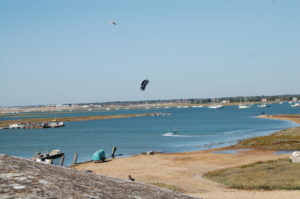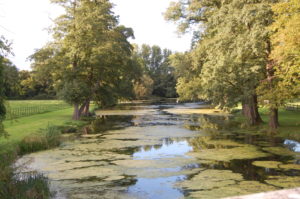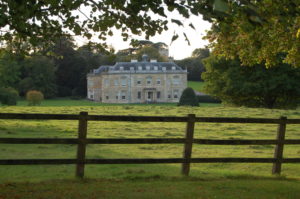The Norfolk take on the nursery rhyme ‘The man in the moon came down one day and asked his way to Norwich’ is ‘Well he would, wouldn’t he?’ East Ruston is near enough to prove the point.
In 1973 a London gardener and his partner bought a redundant vicarage two miles from the sea and created a garden around it. In the nineties they managed to buy acres of agricultural land where they have developed a Norfolk equivalent (without the biomes) of the Eden Project. In a sense it matches Eden because the sea is now less than two miles away: Happisburgh is destined to follow Dunwich in Suffolk under the waves. A poignant vista has been created to show Happisburgh church through an avenue of trees. There is another of the lighthouse. Much of the planting is for ecological reasons.
No such threat will approach East Ruston for many a long year, however. The garden has enough to take the most doom-laden mind into an almost Trump-like denial, not that any semblance of the US President is evoked. The nearest approach is in the desert garden based, like Beth Chatto’s gravel garden, on plants native to areas like Arizona.
In a July that threatens every garden with desert conditions there are still traditional English plantings, foremost among which is the Diamond Jubilee Walled Garden. A Mediterranean garden with elegant curved walls for climbing plants (to be established) marks the middle ground. There is a Dutch garden, the formal King’s Walk and a rose garden for more traditional tastes. Colourful planting in other areas is so bright it made Christopher Lloyd delighted. Beyond the rose garden with its rectangular pond is an exotic garden where, thanks to the Norfolk maritime climate, bananas and other non-hardy plants can be kept outdoors all year. This also has a magnificent sculptural fountain.
Sculpture is an integral part of the landscape, rather than mere garden, in some cases in mimicry of featured plants, otherwise complementary to them (complimentary is also relevant). Many areas have a greenhouse or summer house, these last furnished in a way most of us would wish to be able to afford inside our homes. They are wonderful places for rest during what, despite the sea breeze, was a hot afternoon. Without such an indulgence, although irresistible, is the Hortus Spiralis with its megalth sculpture.
Alpacas are kept in an enclosure near the Diamond Jubilee garden and we noticed a family of guinea fowl happily settled on a lawn. Lucky visitors may also see the two elegant household cats taking their ease in comfortable wicker armchairs or exploring the possibility of sharing a tasty lunch from the Tea Room. Inside and outside eating areas complete the experience. All the food seems to be home made or locally sourced. We had crab salad at a price little more than the crab itself might cost. Cakes (which we reserved until just before departure) are just as delicious as well as generous in quantity.
Another treat for the discerning motorist – the only way to reach the garden – is the period Bentley parked near the Thalictrum walk. Plant sales complete the afternoon, although next year the newly-installed fruit cage – as big as my house, said someone, and we agreed – may offer other treats.










